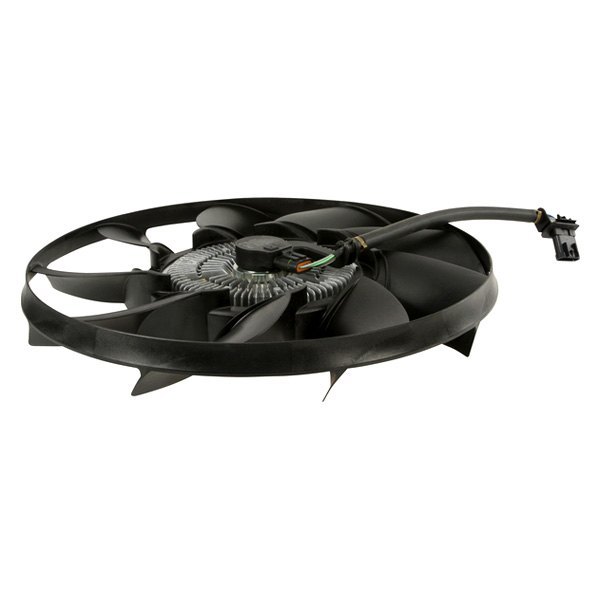The Facts About Fan Blades Revealed
Table of ContentsExamine This Report about Fan BladesEverything about Fan BladesUnknown Facts About Fan BladesThe smart Trick of Fan Blades That Nobody is Talking About

As engine temperature level increases, look for a sudden jump in fan speed. Some electronic screening and knowledge of a scan tool might be needed to identify electronic fan clutches and the sensors used to determine fan engagement. The internal combustion engine generates a great deal of heat, which the engine cooling system is charged with moderating. fan blades.
On the other hand, too much heat can be a big problem, melting non-metal engine parts and rendering lubricating oil ineffective. An overheating engine might literally bond itself into scrap metal. If your fan clutch has gone bad, replace it as soon as possible to avoid engine damage. While you're at it, consider the efficiency and fuel economy benefits of updating to electrical cooling fans.
The state of California needs that this warning be published for individuals acquiring items that live in California. CAUTION: Products might include one or more chemicals known in the State of California to trigger cancer and/or birth problems or other reproductive damage (fan blades). For more details, go to www. P65Warnings.ca. gov Fan to clutch: 17 ft pounds Clutch to water pump: 41 feet lbs Engine fan clutch on recreational vehicle 8.
You're crawling along in traffic and, in spite of the reality that your pickup bed is empty, the coolant temp is annoyingly high. Then you recognize that the a/c is blowing warm. You shut off the a/c and open the windows simply as the traffic breaks and you speed up. The coolant temperature drops.
A Biased View of Fan Blades
In the house, you raise the hood, puzzled. The coolant level is right on, no hoses are dripping and the accessory belt is undamaged. You start the engine, let it idle and make a visual examination. There's no indication of belt slippage, but the radiator cooling fan hardly seems to be spinning.
If your truck resembles many, the cooling fan is mounted to its drive sheave through a clutch. Clutch fans run at different speeds under various conditions to assist reduce drain on the engine and to save fuel. When the engine is hot, the clutch fan runs nearly as quick as the engine.

The hotter air triggers the thermostatic spring to relax and open the valve. Silicone fluid from the tank chamber flows into the main chamber, engaging the clutch, and the fan spins quicker (though it's still slightly slower than the engine). A broken or weakened thermostatic spring in the clutch hub can not be replaced or fixed Silicone fluid oozing past the bearing seal indicates the clutch should be replaced.
To verify the medical diagnosis, start with this basic test: Spin the fan as tough as you can on an engine that has not been started that day. If the fan rotates more than 5 times, you can wager the clutch is bad. You need to feel some resistance and the fan may spin approximately three times, depending upon the ambient temperature these details level.
Facts About Fan Blades Revealed
You need to do more tests. A couple of late-model pickups and SUVs, such as Ford diesels and the Chevy Trendsetter and others with the 4. 2-liter inline Six, have an electronically controlled valve for the fan clutch. In these automobiles, the silicone fluid doesn't drain back over night, so the fan may hardly spin on a cold engine.
If your fan clutch is not running the method it discover here should, it's likely due to a fluid leakage or a bad thermostatic spring or valve. When a leakage happens, it's at the bearing seal, at the center rear of the clutch. Run your finger around the joint and if you get a big dollop of black goo, that's silicone fluid that has actually leaked from the housing.
A light smear of silicone fluid could be regular seepage-- no seal is best. Certainly, if a substantial amount of fluid is missing, the clutch will not spin as quick as it should. When it comes to the other possible offender, the majority of stopping working thermostatic springs open the valve too soon. This premature clutch engagement implies the fan spins faster than it should, however that doesn't make the engine or a/c run hot.
Let's state spinning the fan didn't reveal a problem, there's no leak and you think the spring is all right. You might still have a bad valve. Here's how to learn. You'll need to check the temperature level of the air moved by the fan using a probe-type thermometer that checks out to at least 220 F, preferably to about 250 F.

Things about Fan Blades
